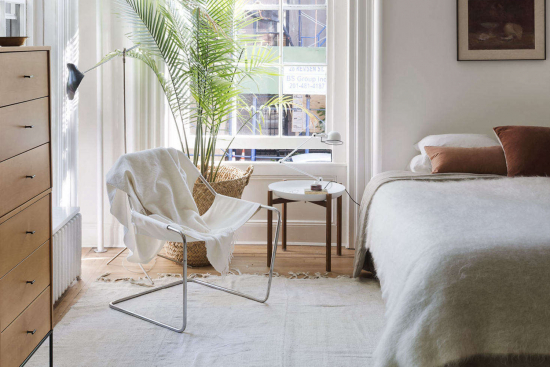Lovely, Dark, and Deep: An 1800s Victorian House in Nebraska, Restored Down to the Doorknobs
Lately I’ve been admiring the truly old-world interiors by Brooklyn-based firm Ridge House: Their projects are what I imagine spaces might have looked like a century and a half back, not with a kitchen but with a scullery, where the inhabitants would carry a candle to bed—and perhaps have a brass bed warmer to heat the covers before getting in.
Today, we’re taking a look at their dark-hued Cameron Residence project, a late Victorian, Queen Anne-style house in Omaha, Nebraska, that dates to 1895.
“Ridge House projects are largely inspired by context, meant to tell the story of a given site,” says architect and designer Lauren Lochry, who, with Jeff Gillway, is co-principal of Ridge House. “For this house, the neo-Gothic architectural language leant a dramatic atmosphere—and a romanticism of when the interior was once shadowy light, before electricity.”
The house was purchased by Jeff himself, who, Lauren says, “grew up as a sixth-generation Nebraskan.” Before they began work, the pair dug deep into the house’s history to better understand how to preserve it. “The architect was Joseph Dietrick of the Omaha firm Dietrick and Guth,” explains Lauren. “Based on our research, this home and the house next door were originally built for a pioneer in the meatpacking industry in Nebraska”: Daniel Cameron, a businessman and inventor. “This neighborhood once held the Nebraska cattle yards, where a majority of the nation’s beef was managed.”
With an understanding of the backstory, Jeff and Lauren set about “taking part in the historic preservation process while simultaneously introducing contemporary interventions,” as they say. In order to make the project feasible financially, the duo also parceled the three-story house into three separate apartments. “This has allowed us to share the story and charm of this place with others,” says Lauren. “We feel strongly about preservation as a means to protect for future generations,” and as a method of sustainability, too.
And preserved it they did—from the dark, detailed moulding in every room, literally down to the hardware. Only one doorknob was sourced from salvage—the rest are the original brass fittings from the 1890s, painstakingly restored. “The hardware original to the home includes doorbells, knobs, rosettes, keyhole plates, mortise locks, latches, pulls,” says Lauren. “Many had been painted over with a thickness that alluded to a 130 year span. We went through a rigorous process of removing each piece, heating in a crockpot, then scrubbing with a stiff nylon bristle brush. Revealing the intricacy of each piece was a highlight for us. The detail is very impressive, and even the relatively unseen backs of items featured ornate decorative motifs.”
The same could be said of the finished project itself: old-world, exquisitely detailed, and restored with an impeccable hand in every corner. Join us for a look.










